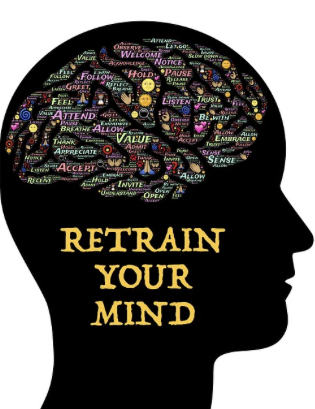
A bicep curl for your brain is a funny thing to imagine. You might wonder what on Earth that even means. Think of it as your ability to notice your firsthand, direct experience of what’s happening — no matter if it’s good or not so good.
The more you notice, the better you get at it. It’s essentially mental strength training. Think of your mind as a muscle that becomes weak and atrophies when not used properly. On the flip side, it gets stronger and more stable when challenged to grow. In other words, your mind, if untrained, is weaker and likely to be easily distracted and flustered. Your mind, if disciplined, is stronger and more likely to be focused.
Noticing is the mental fitness training. The skill you acquire along the way is called mindfulness: the practice of getting stronger at noticing when you’re present and when you’re not. It’s becoming increasingly more popular in the world, even in business. Case Western Reserve University recently concluded that injecting a corporate culture with a fresh dose of mindfulness not only improves employees’ focus, but also their ability to manage stress and collaborate. Who wouldn’t want that?
What’s even crazier is that this practice can literally change your brain. The big science word for this is neuroplasticity. Long-term meditators have better-preserved brains than non-meditators as they age. Participants meditating for an average of 20 years had more gray matter volume. Additionally, another study found the average cortical thickness of meditators ages 40 to 50 was comparable to those of meditators and non-meditators ages 20 to 30.
Yup, you read that correctly. Now that you’re eager to add 20 years to your life, imagine the act of noticing as doing bicep curls for your mind. To build muscular strength, you need to consistently work the muscle. We know that we can’t go to the gym just once and expect results. Unfortunately. Muscles require consistent challenge for them to adapt and grow stronger. In order to strengthen them, we also need to increase the repetition of bicep curls or add more weight over time.
In the same way, in order to build your mental muscle (your brain), you’ll need to practice noticing more often or for longer stretches.
But first, start small. Notice when you’re pulled away by a distraction, and without judging yourself, pay attention to the next moment. Do this again and again. Notice that your busy mind is undisciplined. Notice how easily you’re distracted. Be prepared to notice a lot of distraction. Eventually, doing this over and over again is exactly how you practice mindfulness.
You can remember to notice by asking yourself this several times per hour: “Am I distracted or am I present?” Even sticky notes at your workspace will help you consider this more often.
Asking this question will interrupt your mind from whatever it was distracted by (a tense situation at work, the beach, ice cream) and brings you back to the moment (in front of a field goal, a stressful meeting or a traffic jam). In a second, you can shift from distracted to present, and pull yourself back into the moment. That’s all there is to it. It’s really a very simple, ordinary thing to do. That’s the bicep curl. That’s mental strength training
Try it out:
1. Get settled in your chair.
2. Place your hand just beneath your navel, so you can feel the rise and fall of your belly as you breathe. Take a breath in, and in your mind say, “Inhale.” Pause after your inhalation, saying “Pause.” Breathe out slowly, saying, “Exhale.” Pause after your exhalation, saying “Pause.” Repeat.
3. Continue to breathe this way, saying in your mind, “Inhale, pause, exhale, pause.”
4. When you notice you’ve become distracted by thoughts or sensations (and you will become distracted), say in your mind, “Distracted.”
5. Give yourself a mental high five for noticing. Don’t get mad at yourself for being distracted.
6. Place your attention back on your hand on your belly on your next breath, without any negative self-talk or judgment.
You can’t stop your mind from thinking. It was born to do just that, so you might as well stop judging yourself every time it happens. Key ingredients to sticking with a mindfulness practice are to be kind and patient. Distractions are inevitable. The great news is that when you become aware that you’re distracted, it’s a sign that your practice is working.
In sum, bicep curls for your brain are pretty simple. Identify what you’re doing (inhale, pause, exhale, pause), notice distraction, mentally high five yourself, and actively bring your mind back to your breath — over and over again. This is your mental strength training.
Mindfulness training is about becoming familiar with your mind and all the stuff that goes on in there. Notice your mental bicep curl. So if you notice that you’re distracted 1,000 times, it’s really like doing 1,000 bicep curls. Now if only wearables could track that.
Instead of judging yourself when you notice you’re not paying attention, celebrate. Give yourself a mental high five or simply smile at this phenomenon of just being human. Your brain is getting stronger. Now get in that mental gym.
-----
This post originally appeared on the Whil blog here.
